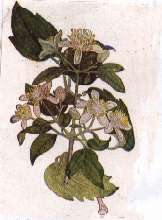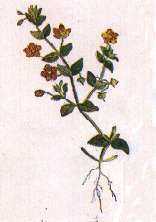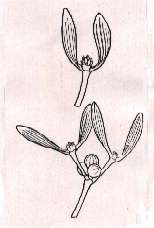![]()

![]()

TRAVELLERS' JOY
Traveller's Joy will be met with at every turn in chalky districts, and is aptly called "Old Man's Beard". It is really a wild clematis. Buttercups are also well-known to all, but contrary to our pleasant rural picture of cows browsing through lush meadows to produce yellow creamy milk, the Buttercup possesses acrid and poisonous juices which cause them to be avoided
The common Red Poppy has flowers of 3 inches or more diameter, and contain a milky juice of a narcotic nature. Scarlet Pimpernel has long enjoyed a reputation as a cheap barometer with Country Folk, as on approach of rain, it closes its petals.

SCARLET PIMERNEL
In woodlands can be found Cuckoo-Pint, or Lords and Ladies. The one single pale-green leaf unrolls and then resembles a Monk's Cowl.
Fringing our rivers and lakes will be found the yellow Flag Iris. The leaves of this handsome plant are sharp-edged, and may cut the hands of the careless gatherer. The snowdrop is scented, but the flowers only remain open from about ten 'til four.
Daisy is a corruption of Day's Eye, the common name for this delightful plant in Chaucer's time. It would be a harsh lawn indeed that did not wear as ornaments a few frivolous daisies. Queen Margaret of Anjou called them The Marguerite of France.
On waste places will be found the Wild Teasel, which absorbs the drowned remains of insects that collect in the rain where the leaves join the stems.

MISTLETOE
Lastly, the Mistletoe, which grows on apple trees. The single seed in the pearl-like berry takes more than a year to ripen. Mistletoe is indebted to birds for carrying the seed to other host-trees.
written by Rosemary Goulding
![]() Return to the September 1997 Features page
Return to the September 1997 Features page
![]() return to Home page and main index
return to Home page and main index
page last updated 1 SEPTEMBER 1997